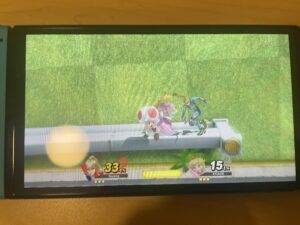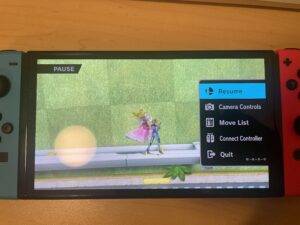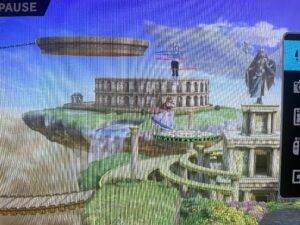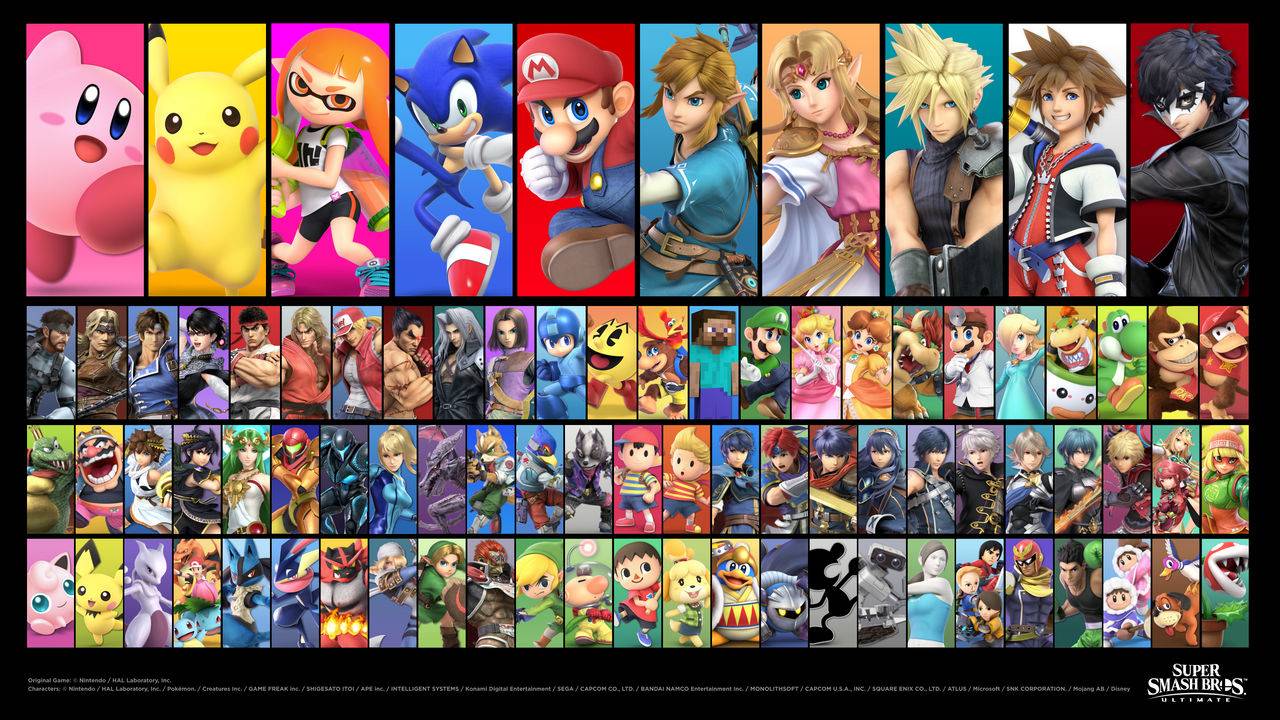This week, I sat down to play Super Smash Bros. Ultimate, developed by Bandai Namco Studios and Sora Ltd. for the Nintendo Switch. This highly popular fighting game, which is rated for everyone 10 and up, has been largely influential in the worlds of recreational and competitive gaming alike, enjoying widespread popularity amongst a wide audience of fans. From cute, round characters like Kirby to the more realistic, muted characters like Snake, there is something for everyone in this franchise’s massive roster. While I have played Super Smash Bros. in the past, this week I approached the game with a feminist lens inspired by Shira Chess’s “Play Like a Feminist”. This meant analyzing the game’s relationship to traditional notions of femininity, gender roles, and intersectionality, with the goal of uncovering critiques (or celebrations) of the game along these lines. Ultimately, I argue that while Super Smash Bros. makes some effort to promote feminist ideals using “echo fighters” and strong female characters, it fails to escape the heterosexual masculine perspectives which have traditionally dominated the culture of video games. Instead, it falls into the pattern of hypersexualizing some female characters, while also maintaining a fairly male-dominated roster.
First, let us start with the partial effort that the game does make to promote queer and feminist potential. For one, there are characters who challenge the traditional notions of femininity by including strong, martially-adept female characters. For example, Bayonetta and Samus utilize their superhuman strength and firearm prowess as they fight around the stage. Furthermore, many characters have both male and female versions, like Corrin or Steve, yet share identical stats—helping to break down barriers between genders. Similarly, there are echo fighters, like Lucina and Isabelle (to some extent), which share many of the same capabilities as the male fighters they are based off of. Moreover, Sheik and Samus, who appear to be male but are actually female, help populate the roster with some cross-dressing characters, further breaking down traditional notions of femininity and masculinity.
However, these positive aspects of the game, which help to break down traditional constraints around femininity and gender roles, are unfortunately overshadowed by unfortunate design choices on the part of the developers. For one, many of the women in the game are hypersexualized in design. Bayonetta and Zero Suit Samus are often cited as examples of character design for the male gaze, which adds an air of objectification to a roster that already lacks female representation. Half of the women in the roster wear dresses, while the other half wear skin tight bodysuits, which lack the practicality of the armor that many of the male characters wear. Of the 82 characters in the game, only around 14 are female by default. While several additional characters have a female variant, the character selection screen typically defaults to showing the male version (like in the case of Corrin or Steve). And with regard to intersectionality, the roster includes no women of color.


While Peach depicts traditional femininity, Zero Suit Samus is a commonly-cited example of hyper- sexualization.
Moving past aesthetics and into mechanics, most of the female characters in the game are quite light and airy, possessing high jumps and slower fall speeds. For example, I played a match as Wii Fit Trainer, who’s moveset revolves around light stretches and even hula hooping into the air. Contrast this with characters like Little Mac or Ike, who are heavier characters that possess more weight within the physics of the game.

Wii Fit Trainer floats around with hula hoops.
To be sure, some could argue that Super Smash Bros. is limited by the franchises which it draws from. After all, it does not actually design the characters, but rather draws them from already existing games within the Nintendo universe. However, if Super Smash Bros. has the discretion to choose from existing IPs, then it has the power to level the playing field by choosing a more equitable roster. Furthermore, when 3D-modeling characters, it has the artistic liberty to make them more realistic in terms of bodily proportions.
Overall, Super Smash Bros. falls short of the mark when it comes to promoting feminist ideals and creating an equitable environment for gamers of all identities. With its hypersexualization of some characters, and a fairly small percentage of the roster dedicated to female characters, the game misses the opportunity for meaningful and transformative representation. Given its status as one of the most popular Nintendo franchises, Super Smash Bros. could pave the way for a more equitable gaming culture, reminding non-male players that there is a place for them in the world of fighting games too. However, this requires breaking free from a history of heterosexual masculine perspectives, which the game has yet to fully see through.



